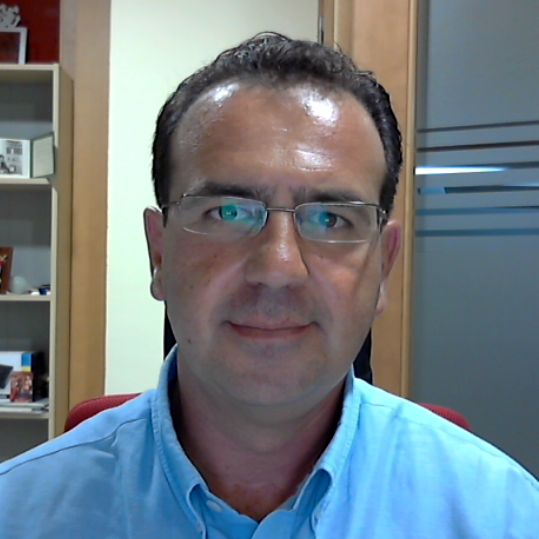
JOSÉ PEDRO VENZAL
Court expert calligrapher Since 1992. After more than 20 years of professional experience still investigating on signature analysis, manuscripts and documents; as well as study protocols and authentication of art, especially painting. He has the professional license nº 102 of the National Association of Forensic Document and Handwriting Experts of Spain, and he is a member of the International Academy of Experts in Scriptures and Documents of France.
- BA in Geography and History (UIB, 1986-1991).
- Diploma in Calligraphy and Graphology Skills from the "Spanish Society of Graphology" (Madrid, 1991-93).
Professional Involvement:
Continuous training:
Specific training courses and professional seminars on technical means and advances in multispectral analysis, carried out in recent years:
VIII International Congress SIPDO 2014, organized by the UNIVERSITY OF CUENCA AND THE INTERNATIONAL SOCIETY OF EXPERTS IN DOCUMENT EXAMINATION
Specialized Seminar: "The contribution of graphology in calligraphic expert" and "The expert in court: verbal and nonverbal language". (Madrid, October 2014)
September 2013, Workshop: "Results of international cooperation in stroke crosses and old ink". (Lyon)
October 2011, Workshop: "Preliminary results on the physical-chemical study of intersecting lines". (Interpol. Lyon)
April 2011, Course: "Neurophysiological mechanisms of hemispheric laterality in identifying handwritten scriptures". (Barcelona)
November 2010, Course: "The use and importance of optical and filtering instruments in document analysis. Contribution of metameric lights in reports". (Madrid)
November 2009, Course: "Systems, methods and conclusions in determining the authenticity or falsity of seals". (Madrid)
March 2009, Fourth International Conference of Experts on scriptures and documents: "Expert witness in scriptures and documents from the 21st century". (Granada)
May 2008, Course: "Authentication of documents from historical figures and ancient documents". (Madrid)
TECHNICAL RESOURCES
a) Techniques and Methods used in the physical-chemical analysis.
· Optical microscopy with polarised, incident and transmitted light. Fluorescence microscopy.
· Electron scanning microscopy - microanalysis using x-ray dispersive spectroscopy (SEM - EDXS)
· Gas chromatography - mass spectrometry (GC-MS)
· High-resolution thin layer chromatography (HPTLC)
· Fourier transformed infrared spectroscopy (FTIR by transmission and FTIR-ATR)
· X-Ray diffraction (XRD)
· RAMAN spectroscopy.
b) Multispectral Analysis System and EXPERTSys Computer Programme for the study by reflectography of paintings, writings, signatures and documents, comprising:
· Full multifunctional criminology station with Video Comparator System and Multispectral Analysis of Signatures, Writings and Documents "ExpertSys®".
· Special Observation Unit - Near Infrared. Infrared luminescence and Chromatic Luminescence. Broad-spectrum video camera (covering the full range of the electromagnetic spectrum UV-LV-IR).
· 3'5-90x trinocular Microscope with interchangeable 10x and 20x lenses with a double extendable arm and CCD colour camera for C-mount, specifically for the study of any kind of document and the microscopy of strokes. Swivel head calibrated with different lighting (grazing, oblique, transmitted).
· External Fibre Optic lighting with high intensity and adjustable cold light, DUAL PIPER, for microscopy. Different light intensities.
· LUMINISYS TR analysis system for the Chromatic Luminescence study of the physico-chemical reactions of pigments, writings, signatures and media. With complete UV-LV-IR radiation systems, and 45º lights, LV and IR slope and transmitted. Filtered specific for IR, Chromatic and UV Luminescence.
c) Analysis using chromatic luminescence
LUMINISYS TR Analysis System for the Chromatic Luminescence study of the physico-chemical reactions of pigments, writings and signatures. |
Light sources: |
Filters: |
Daylight 6400ºK |
112 filtered by chromatic luminescence |
UV light (> 365 nm., and> 375 nm.) |
4 types of UV filter |
880nm IR LED Light. and 950nm |
3 types of white light filter |
10W Halogen Light (Slope 0.5º/oblique 45º) |
3 types of IR light filter |
Direct light> 390 nm. |
Filtered by IR luminescence |
White LED light |
|
Direct metameric lights |
|
To highlight the fact that the chromatic luminescence provides "chromatic information" which is lost when IR luminescence is used, since the latter's results are only in greyscale. This is an optical analysis method showing the electromagnetic visible light reaction of a substance, previously excited with a visible light. Its advantage is that it does not destroy or alter the object of study, is safe and protects the DNA.
· Digital Photo Cameras FUJIFILM 9600 Colour and NIKON Coolpix 5200.
· Colorimetric System of inks/pigments in the Additive Synthesis (ACSA) to obtain the spectral curve and integrated ExpertSys Forensic Programme.
· AVERMEDIA document camera monitored by up to 1600% zoom (digital) for photographing signatures in catalogues or indubitable references to be included in the reports.
· TRUESCAN portable system for multispectral analysis with 9 types of filtered white light, IR, UV. 7 Types of lighting with 20x capacity. IR slope light for Pressure valuation.
· Collecting micro-samples: specialist restoration equipment used by restorers.
d) Scientific methodology:
· Molecular analysis of pigments by identifying materials in cross sections.
· Analytical and descriptive method for the analysis of paintings/scripture/signatures.
· Comparative-demonstrative method.
· Homothetic method for the comparison of differently sized scripture.
· MEPRI method of pigment removal using infrared radiation to determine the existence and condition of underlying paint/signatures.
· Uplighting method.
· Canvas/pigment observation method using UV radiation in the spectrum 340-380 nm.
· Ink discrimination method using IR, 700-980 nm filter.
· Ink discrimination method using chromatic luminescence in the spectrum's visible and invisible field.
· Colorimetric analysis on additive synthesis (RGB).